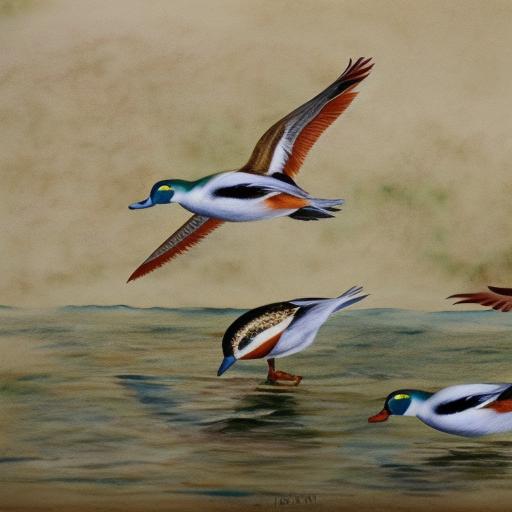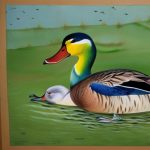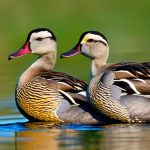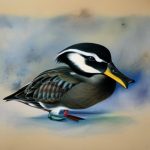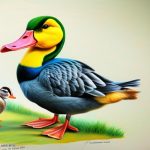Wild duck breeds are a diverse group of waterfowl that are found in various habitats around the world. These birds are known for their beautiful plumage, distinctive calls, and unique behaviors. Wild duck breeds are an important part of many ecosystems, playing a crucial role in maintaining the balance of their natural habitats. They are also popular among birdwatchers and wildlife enthusiasts for their striking appearance and fascinating behaviors. In this article, we will explore the characteristics, types, habitat, distribution, conservation, interactions with humans, and the importance of wild duck breeds in ecosystems.
Key Takeaways
- Wild duck breeds are diverse and have unique characteristics that make them important in ecosystems.
- Wild duck breeds have distinct physical and behavioral characteristics that help them adapt to various habitats.
- There are different types of wild duck breeds, each with its own unique features and distribution.
- Wild duck breeds can be found in a variety of habitats, including wetlands, marshes, and rivers, and have a wide distribution around the world.
- Conservation efforts are important to protect wild duck breeds and their habitats, as they play a crucial role in maintaining the balance of ecosystems.
Characteristics of Wild Duck Breeds
Wild duck breeds are known for their colorful plumage, which varies greatly between species. They have webbed feet that are adapted for swimming and diving in water. Their bills are also specialized for feeding on aquatic plants, small fish, and invertebrates. Wild ducks are strong fliers and can cover long distances during migration. They are also highly adaptable and can thrive in a wide range of habitats, including marshes, lakes, rivers, and coastal areas. These birds are social animals and often form large flocks during migration and breeding seasons. They are also known for their distinctive calls, which vary between species and are used for communication and mating purposes.
Wild duck breeds exhibit a wide range of behaviors, including courtship displays, nesting, and raising their young. They are also known for their ability to adapt to changing environmental conditions and are often found in urban and suburban areas. These birds play a crucial role in the food chain, as they are important prey for many predators, including birds of prey and mammals. Overall, wild duck breeds are fascinating creatures with unique characteristics that make them an important part of the natural world.
Different Types of Wild Duck Breeds
There are over 120 different species of wild duck breeds, each with its own unique characteristics and behaviors. Some of the most well-known species include the mallard, wood duck, teal, pintail, wigeon, and shoveler. These ducks vary in size, coloration, and habitat preferences. For example, the mallard is one of the most widespread and adaptable species, found in a wide range of habitats across North America, Europe, and Asia. The wood duck, on the other hand, is known for its stunning iridescent plumage and is found in wooded swamps and marshes in North America.
Teal ducks are small and fast-flying birds that are found in wetlands and shallow waters across the world. Pintails are known for their long, elegant necks and are found in a variety of wetland habitats in North America, Europe, and Asia. Wigeons are medium-sized ducks with distinctive yellow foreheads and are found in a wide range of habitats across the Northern Hemisphere. Shovelers have large, spatula-shaped bills that they use to filter small organisms from the water and are found in wetlands and marshes across the world. Each species of wild duck breed has its own unique characteristics and behaviors that make them fascinating to observe in the wild.
Habitat and Distribution of Wild Duck Breeds
Wild duck breeds can be found in a wide range of habitats around the world, including freshwater lakes, rivers, marshes, coastal estuaries, and even urban areas. They are highly adaptable and can thrive in both natural and human-altered landscapes. Many species of wild duck breeds are migratory and travel long distances between their breeding and wintering grounds. During the breeding season, wild ducks prefer to nest near water in dense vegetation to provide cover and protection for their eggs and young.
The distribution of wild duck breeds varies greatly between species. Some species, such as the mallard and teal, have a widespread distribution across multiple continents, while others, such as the wood duck and pintail, have more restricted ranges. The availability of suitable habitat is crucial for the survival of wild duck breeds, as they rely on wetlands and other aquatic habitats for feeding, nesting, and raising their young. Human activities such as habitat destruction, pollution, and hunting have had a significant impact on the distribution of wild duck breeds in many parts of the world.
Conservation of Wild Duck Breeds
Conservation efforts for wild duck breeds are crucial to ensure the survival of these important waterfowl species. Many organizations and government agencies work to protect and restore wetland habitats that are essential for wild duck populations. Wetland conservation not only benefits wild ducks but also provides important ecosystem services such as flood control, water purification, and habitat for other wildlife species.
Hunting regulations and management practices also play a key role in the conservation of wild duck breeds. Sustainable hunting practices ensure that wild duck populations remain healthy and stable while providing recreational opportunities for hunters. In addition to habitat protection and hunting regulations, public education and outreach programs help raise awareness about the importance of wild duck conservation and promote responsible stewardship of wetland habitats.
Interactions with Humans
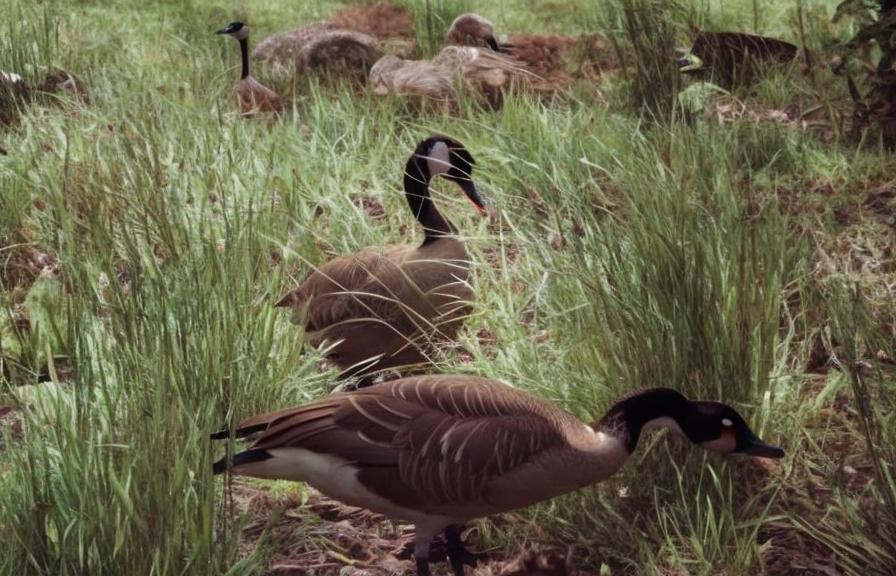
Wild duck breeds have long been a source of fascination and inspiration for humans. They have been depicted in art, literature, and folklore throughout history and continue to capture the imagination of people around the world. Wild ducks are also popular among birdwatchers and wildlife enthusiasts who enjoy observing their behaviors and learning about their natural history.
In addition to their cultural significance, wild duck breeds also have economic importance for humans. They are a valuable game species for hunters and provide recreational opportunities for birdwatching, photography, and eco-tourism. Wild ducks also play a role in agriculture by consuming pests such as insects and snails that can damage crops.
However, human activities such as habitat destruction, pollution, hunting, and climate change have had negative impacts on wild duck populations. Conservation efforts are crucial to mitigate these threats and ensure the long-term survival of wild duck breeds.
Importance of Wild Duck Breeds in Ecosystems
Wild duck breeds play a crucial role in maintaining the health and balance of aquatic ecosystems. As omnivorous waterfowl, they feed on a variety of plants, insects, small fish, and invertebrates, helping to control populations of these organisms. Their feeding behaviors also help to aerate sediments and distribute nutrients in wetland habitats.
Wild ducks are an important food source for many predators, including birds of prey, mammals, and reptiles. Their presence in wetland habitats supports a diverse food web that benefits many other species. In addition to their ecological importance, wild ducks also contribute to the cultural heritage of many societies around the world.
In conclusion, wild duck breeds are fascinating waterfowl that play a crucial role in maintaining healthy ecosystems. Their diverse characteristics, behaviors, and interactions with humans make them an important part of the natural world. Conservation efforts are essential to ensure the survival of these iconic birds for future generations to enjoy and appreciate.
If you’re interested in learning more about all wild duck breeds, you should check out the article “When is Duck Mating Season” on PoultryWizard.com. This comprehensive guide provides valuable insights into the mating behaviors and seasons of various wild duck breeds, helping you understand their natural reproductive cycles. Understanding these patterns can be beneficial for anyone interested in breeding ducks or simply observing their behavior in the wild. For more information on poultry breeding, including guinea fowl and chicken coop placement, be sure to explore the related articles on PoultryWizard.com. Source
FAQs
What are wild duck breeds?
Wild duck breeds are species of ducks that are found in the wild and have not been domesticated. They can be found in various habitats such as wetlands, marshes, rivers, and lakes.
How many wild duck breeds are there?
There are over 120 species of wild duck breeds, each with its own unique characteristics and behaviors. Some common wild duck breeds include the Mallard, Wood Duck, Northern Pintail, and Teal.
What do wild duck breeds eat?
Wild duck breeds are omnivorous and feed on a variety of foods including aquatic plants, insects, small fish, and crustaceans. They may also forage for seeds, grains, and grasses on land.
Where can wild duck breeds be found?
Wild duck breeds can be found in various regions around the world, including North America, Europe, Asia, Africa, and Australia. They inhabit a wide range of habitats, from temperate forests to tropical wetlands.
Are wild duck breeds protected?
Many wild duck breeds are protected under conservation laws and regulations in order to preserve their populations and habitats. Hunting seasons and bag limits are often established to ensure sustainable management of wild duck populations.
Meet Walter, the feathered-friend fanatic of Florida! Nestled in the sunshine state, Walter struts through life with his feathered companions, clucking his way to happiness. With a coop that’s fancier than a five-star hotel, he’s the Don Juan of the chicken world. When he’s not teaching his hens to do the cha-cha, you’ll find him in a heated debate with his prized rooster, Sir Clucks-a-Lot. Walter’s poultry passion is no yolk; he’s the sunny-side-up guy you never knew you needed in your flock of friends!

